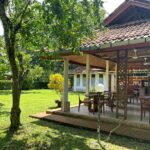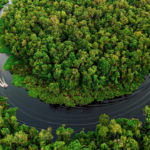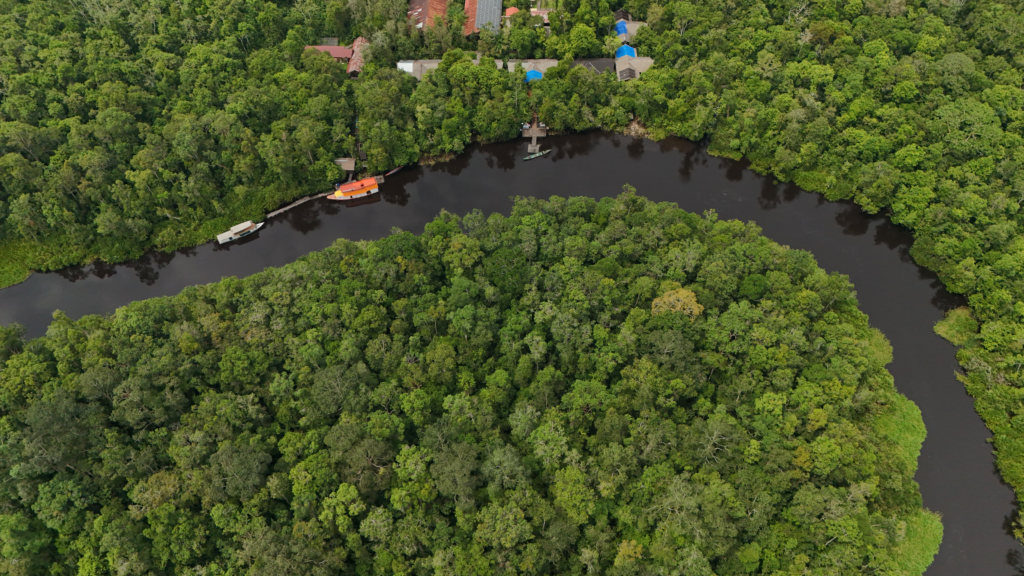Protected Magazine
Protected Areas In Indonesia
About the author: NPAQ member and former Councillor and Vice President, Steve Noakes, has a long association with protected areas and wildlife tourism in Indonesia. He is Chair of the Advisory Board of the Ecolodges Indonesia Group of Companies which owns and operates lodges adjacent to Way Kambas National Park (Sumatra), Rimba Orangutan Ecolodge (Tunjung Putting National Park, Kalimantan), Kelimutu Crater Lakes Ecolodge (Kelimutu National Park, Flores) and Mbeliling Mountain Ecolodge (Mbeliling Forest Reserve, Flores). Steve is also Chair of the Board at Binna Burra Lodge inside the Lamington National Park, Queensland.
An archipelago of national parks and ecolodges.

Managing over 50 national parks across the largest archipelago in the world to form a single state is a challenging task. The challenge is compounded when we look at the total picture of well over 500 protected areas throughout Indonesia!
Indonesia has 566 protected areas covering 36,069,368.04 ha.1 Most (490) are terrestrial protected areas (22,540,170.38 ha) with the remaining 76 marine protected areas (13,529,197.66 ha).
The terrestrial protected areas include 43 National Parks, 239 Nature Reserves, 70 Game Reserves, 13 Hunting Parks, 22 Grand Forest Parks, and 103 Nature Tourism Parks.
Marine National Parks comprise 4,589,006.10 ha. Managed with the leadership of the Ministry of Environment and Forestry, the ‘magnificent seven’’2 marine national parks are Kepulauan Seribu National Park, Karimunjawa National Park, Wakatobi National Park, Bunaken National Park, Kepulauan Togean National Park, Taka Bonerate National Park, and Teluk Cenderawasih National Park.
Stretching between the Pacific and the Indian Oceans and bridging two continents, Indonesia includes the fascinating biogeographic division of the Wallace Line,3 which delineates the faunas of Australia and southeast Asia. Comprising upland, lowland, coastal, mangroves, swamp, savanna, evergreen forest, mountain range, and aquatic ecosystems, Indonesia’s national parks are increasingly becoming attractive to domestic and international tourists seeking an experience outside the ever-popular Bali and major cultural attractions such as the Borobudur and Prambanan temple complex near Yogyakarta.
Providing access to some of these unique ecosystems and supporting biodiversity conservation efforts and local communities was the original vision almost three decades ago by the founder of Ecolodges Indonesia, veterinarian Dr. Alan Wilson, and his wife, Meryl.
In 1996, a small group of Indonesians and Australians collaborated to build an ecolodge at Udayana University, aimed as a teaching facility to assist the Conservation Department of the oldest and largest University in Bali. The second lodge was built in Labuan Bajo (Flores/Komodo National Park) in 1998 to support the potential of the Komodo National Park.4
Both ecolodges only employed local people based on the Masai conservation model in the Masai Mara in East Africa where Alan and Meryl were raised.5 The success of the second lodge led to the concept of Ecolodges Indonesia. Subsequently, the company built or redesigned four other lodges in Indonesia, including Rimba Orangutan Ecolodge (Tanjung Putting National Park), Satwa Sumatra Ecolodge (Way Kambas National Park), Kelimutu Crater Lakes Ecolodge (Kelimutu National Park), and Mbeliling Mountain Ecolodge (Mbeliling Forest Reserve, Flores).
A brief introduction to each of the Ecolodge locations:
Tanjung Puting National Park in Central Kalimantan (Borneo) covers 3,040 sq km. The ‘iconic mega-fauna’ is the orangutans, creating international awareness through the extensive efforts of the Orangutan Foundation International6 based at the Camp Leakey research station inside the park. The proboscis monkey with its “Jimmy Durante” nose as well as seven other primate species are found in the park, which includes clouded leopards, civets, Malaysian sun bears, mouse deer, barking deer, sambar deer, and the wild cattle known as banteng. Tanjung Putting hosts over 230 species of birds, including hornbills, deep forest birds, and many wetland species.

Way Kambas National Park in southern Sumatra has high genetic biodiversity. It is particularly known as the home of the endangered five big mammals – Sumatran Elephant, Sumatran Rhino, Sumatran Tiger, Honey Bear, and Tapir. The park has 406 bird species and 50 different species of mammals. It covers 125,621.30 ha of riverways, swamp and lowland rainforest. Way Kambas National Park is part of the network of ASEAN Heritage Parks.
Kelimutu National Park is best known for its three-coloured lakes. The highest point is at Mt Kelibara (1,731 metres), and 1,690 metres at Mt Kelimutu. The park protects 19 endemic and endangered animals including the Floresian punai (Treron floris), Wallacea owl (Otus silvicola), Floresian kancilan (Pachycephala nudigula), Floresian eagle (Spizeatus floris), and Timorese tesia (Tesia everetti). It includes some 140 species of woody plants (trees and shrubs), 57 species of birds, 13 species of mammals, and four species of reptile.
Mbeliling Forest Reserve is located less than one hour’s drive up the mountains to the west of the gateway port of Labuan Bajo near Komodo National Park, Flores. At 1,239 m, Mount Mbeliling is the highest point in west Flores. The Forest Reserve spans over an area of 15,000 hectares. It is the habitat of numerous endemic plant species and birds. The Jakarta Post reports that several Komodo dragons have been found near Golo Mori and Tanjung Kerita Mese villages in the Mbeliling Forest area.7
Concluding comments:
A global biodiversity hotspot, there will be increased pressure to conserve Indonesia’s sensitive natural areas over the next few decades as the local population and tourism grow. Currently, with some 270 million people, Indonesia ranks number four in terms of country populations, and within a few years, that will grow to 300 million across more than 300 ethnic groups. The largest economy in Southeast Asia, it is currently the world’s 10th largest economy in terms of purchasing power parity8 and is expected to be the world’s 4th largest economy within 20 years.
Climate change is already having an impact, including water availability, health and nutrition, disaster risk management, and urban development. These issues are especially relevant in the numerous coastal zones and in the protected natural areas, with additional implications for poverty and inequality. Indonesia’s protected natural areas, including tropical rainforests, peatlands, and mangrove forests, can store significant amounts of carbon that can mitigate global climate change impacts.
The world needs successful outcomes in Indonesia for biodiversity conservation and well-managed national parks. They are all part of the “natural solutions” in helping communities cope with the climate change problem (IUCN 2016).



